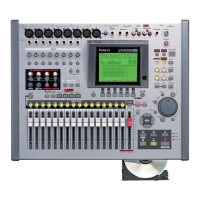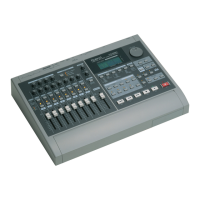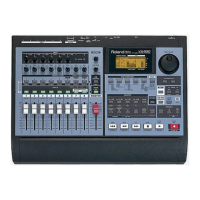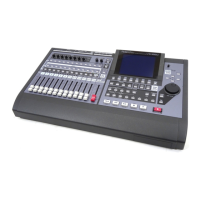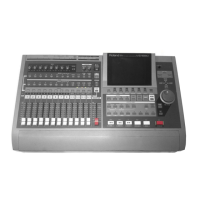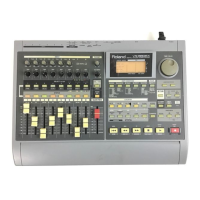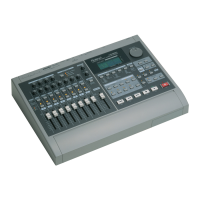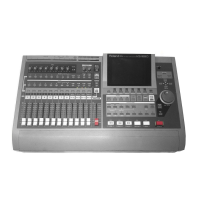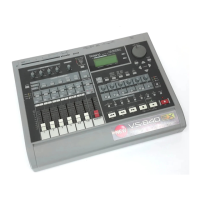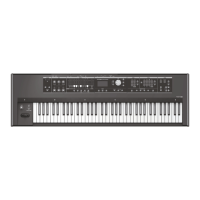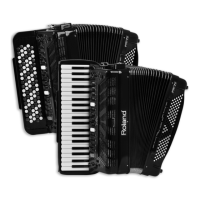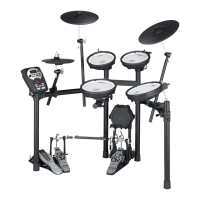6—Understanding the Hard Disk Recorder
Roland VS-2400CD Owner’s Manual www.RolandUS.com 85
Phrases
A set of pointers is called a “phrase.” Every time you make a new recording, the
VS-2400CD automatically creates a new phrase to play the new audio. Each phrase
appears in the Home screen’s playlist (Page 118) as rectangle.
Phrases are also created in other ways:
• Any time you re-record a portion of a track—typically by punching (Page 185)—the
new recording appears on the track as a phrase.
• You can create a new phrase that plays a currently unused take.
Virtual Tracks, or “V-Tracks”
As you record audio, punch in and out and edit it, you create a string of phrases
positioned one after the other in the order in which they’ll play back. This string of
phrases is called a “Virtual Track,” or “V-Track” for short.
Of course, if you’ve made a recording but haven’t done any punching or editing, the
V-Track that plays it will consist of just the one phrase that plays the entire take.
Non-Destructive, Pointer-Based Editing
Pointer-Based Editing
When you edit audio on the VS-2400CD, what you’re actually doing is editing a phrase,
the set of pointers that instruct the VS-2400CD how to play the audio. You’re not
actually changing the take stored on your hard disk at all—you’re only editing its
pointers. This type of editing is called “non-destructive editing” because it does no
harm to the take itself. It doesn’t alter the take at all.
This illustration shows how erasing unwanted audio from a recording affects its
pointers. The dark portion of the take is the part that you hear during playback.
All you’ve really done is changed the positions of Pointers 1 and 2.
You can perform various editing operations on phrases, and edit regions of audio
within phrases, as we’ll discuss later in this chapter, on Page 88.
From here on in the
VS-2400CD Owner’s Manual
, we’ll refer to a string of phrases by its
short name: “V-Track.”
A few editing operations change audio by copying it and altering the copy—even so,
the original take remains unaffected, and the pointers simply point to the copied audio.
Each phrase is a rectangular box. This
illustration shows a string of three
phrases.
Throat-clearing Singing
2. Start playback
3. Stop playback
Vocal 11. Name of take
1 minute 2 minutes 3 minutes 4 minutes0 minutes
Talking
Throat-clearing TalkingSinging
2. Start playback
3. Stop playback
Vocal 11. Name of take
1 minute 2 minutes 3 minutes 4 minutes0 minutes
Before editing: After editing:
VS2400OMUS.book 85 ページ 2006年2月28日 火曜日 午前11時12分
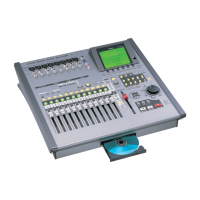
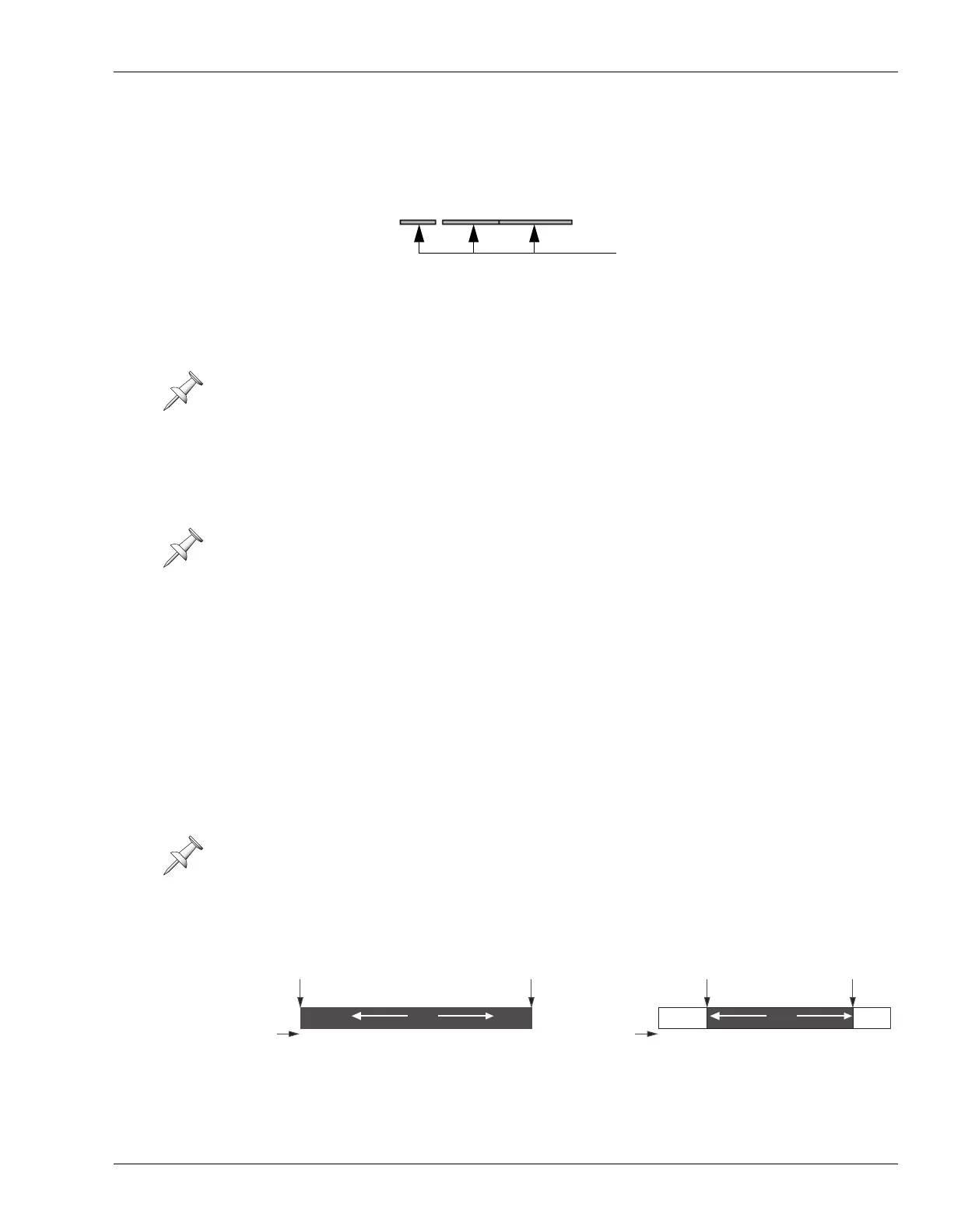